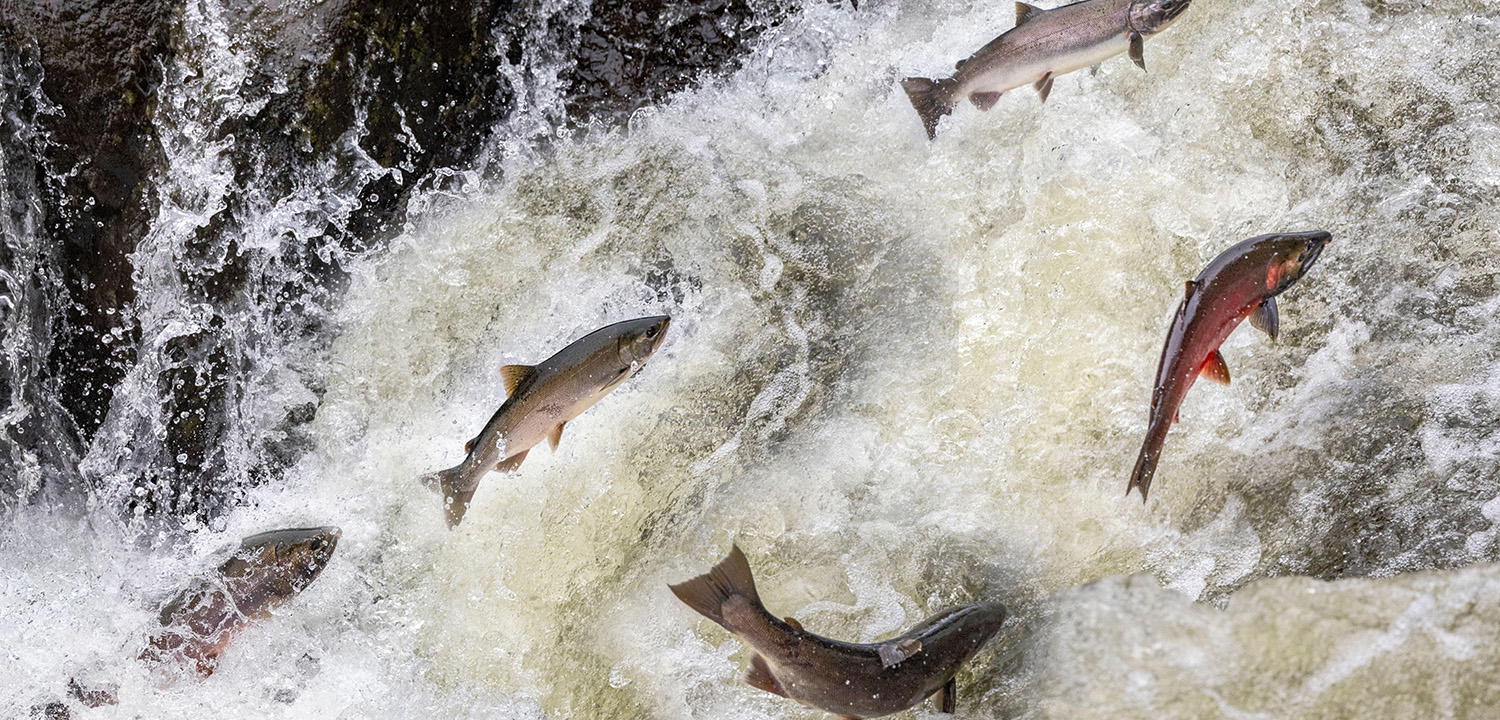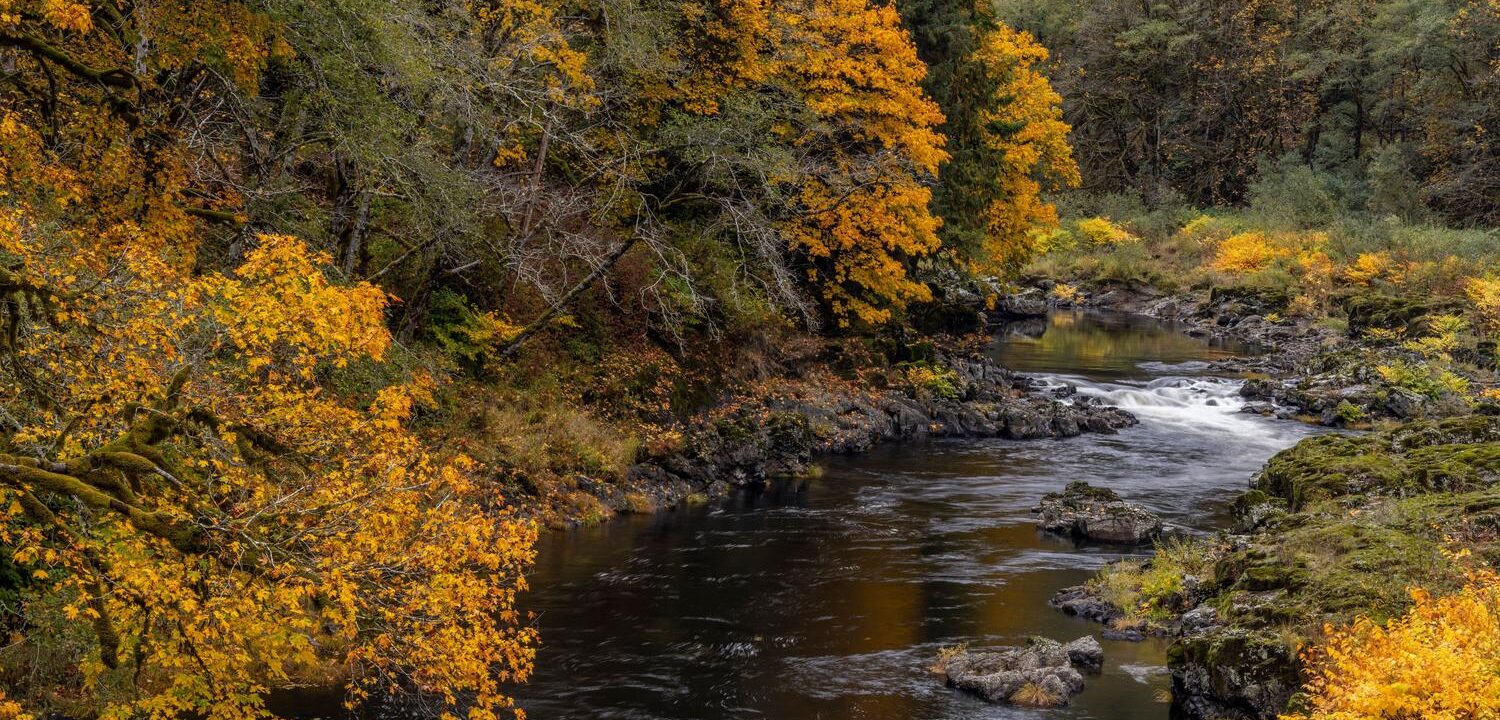The new law is rolling out, along with big funding for conservation and landowners. But there’s a hitch: without federal approval by 2027, we could still lose this landmark agreement.
(UPDATE NOTE, JULY 2024 — The State of Oregon submitted a final draft habitat conservation plan to NOAA and the U.S. Fish & Wildlife Service—a required part of the historic law’s 2027 deadline for federal approval.)
A lot has happened since Oregon’s landmark Private Forest Accord was signed into law in 2022.
The historic agreement broke decades of gridlock in Oregon on how best to manage private industrial forestlands. Now, it promises to protect cold water for salmon, fish, wildlife, and people on streams across 10 million acres of private land in Oregon. Yet for all the celebration at the Governor’s May 2022 signing ceremony, we’re not at the endpoint of this long journey—far from it.
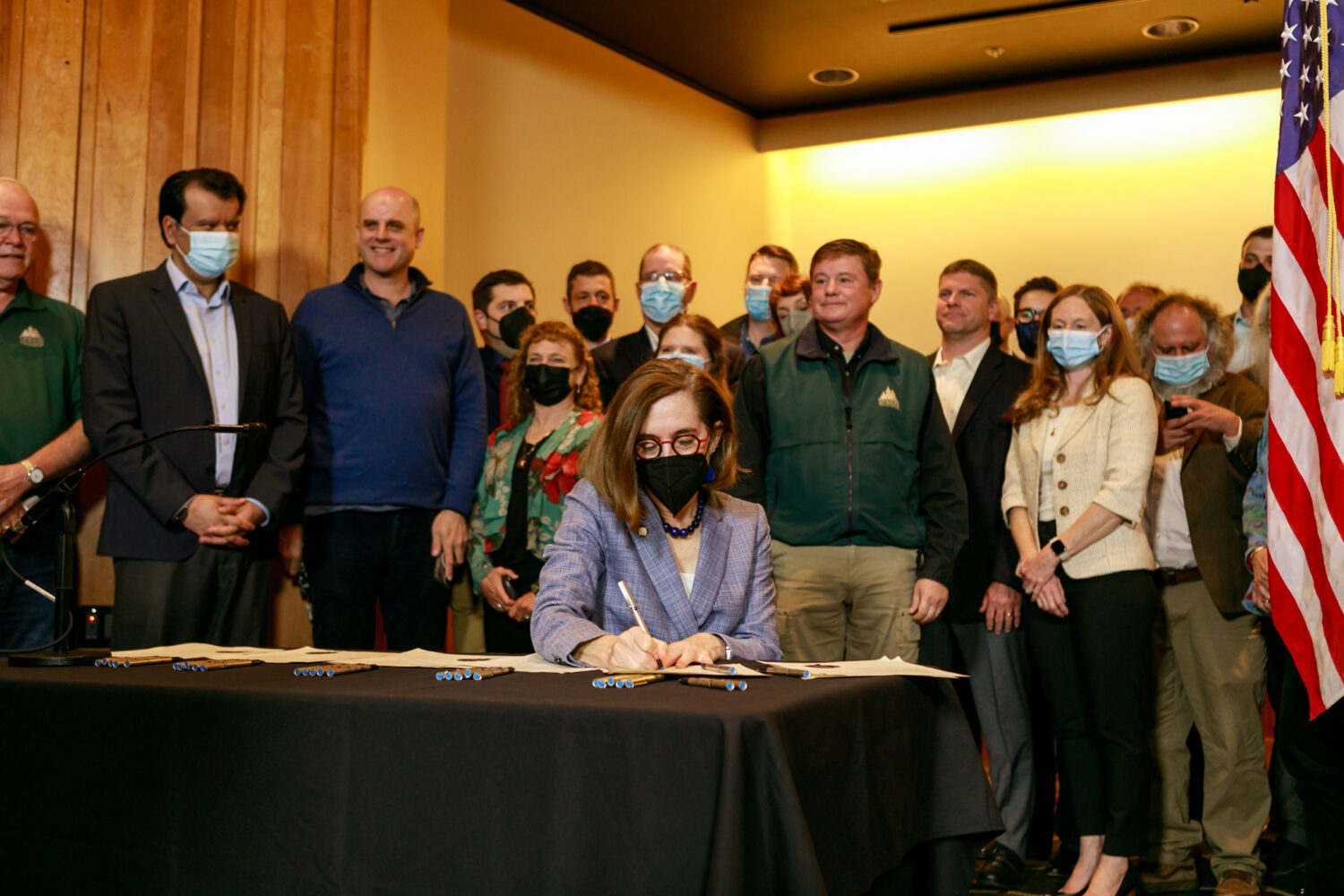
Immediately after the law’s passage, conservation and industry groups launched work with the Oregon Department of Forestry to rewrite the state’s private forestry regulations to match the new agreements. Last fall, the Board of Forestry officially approved the new playbook, with rollout scheduled to start on January 1, 2024.
But looming over the Private Forest Accord is another, more formidable deadline. Federal agencies still have to approve the final rules by December 31, 2027, as part of a formal Habitat Conservation Plan (HCP). Without federal approval, the new law will be scrapped completely.
“It took years of hard work to reach the Private Forest Accord, but we’re definitely not out of the woods yet,” says Stacey Detwiler, Wild Salmon Center’s Senior Oregon Policy Manager. “Until we get federal approval, this overhaul of the Oregon Forest Practices Act remains uncertain. So a yes from the feds is what has to keep all of us on track.”
“Until we get federal approval, this overhaul of the Oregon Forest Practices Act remains uncertain. A yes from the feds has to keep all of us on track.”
WSC Senior Oregon Policy Manager Stacey Detwiler
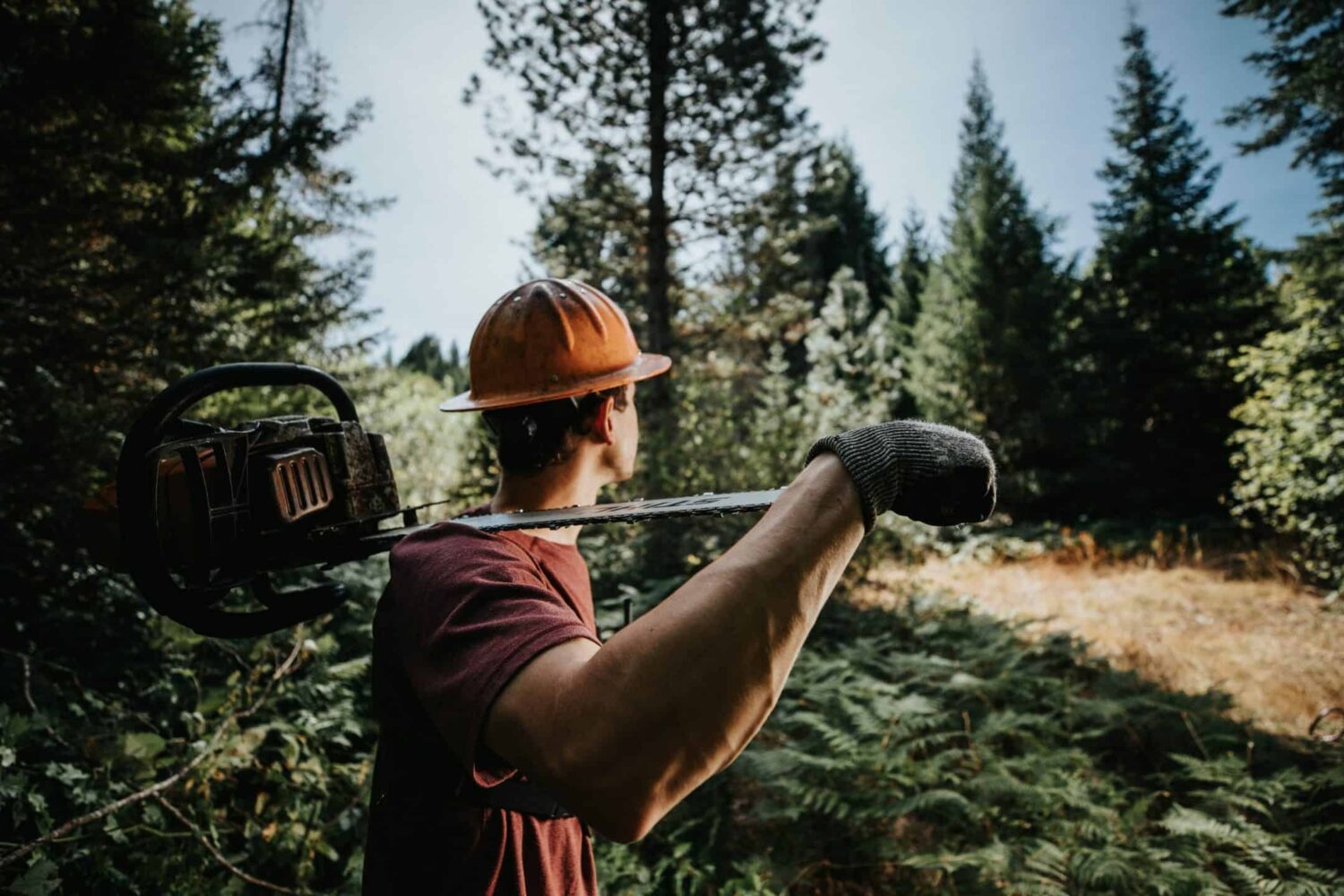
For Detwiler and others committed to making that 2027 deadline, that means work continues at a blistering pace.
Detwiler, for example, is involved both with the HCP and rule implementation processes. She’s also co-chairing a new adaptive management committee, created as part of the agreement. With help from an independent team of scientists spanning conservation and private industry, the committee will track the Accord’s conservation outcomes, assessing its impacts on endangered species like Oregon Coast Coho.
The new law also created a mitigation committee—chaired over the last year by former WSC Oregon Policy Director Bob Van Dyk—that will grant millions of dollars each year for conservation and restoration projects.
“This annual pot of money is an exciting new source of funding for restoration projects, conservation easements, and more,” Detwiler says. “It’s great news for all of our partners on the ground working to enhance salmon and wildlife habitat across Oregon.”
“This is an exciting new source of funding for all of our partners on the ground working to enhance salmon and wildlife habitat across Oregon.”
WSC Senior Oregon Policy Manager Stacey Detwiler
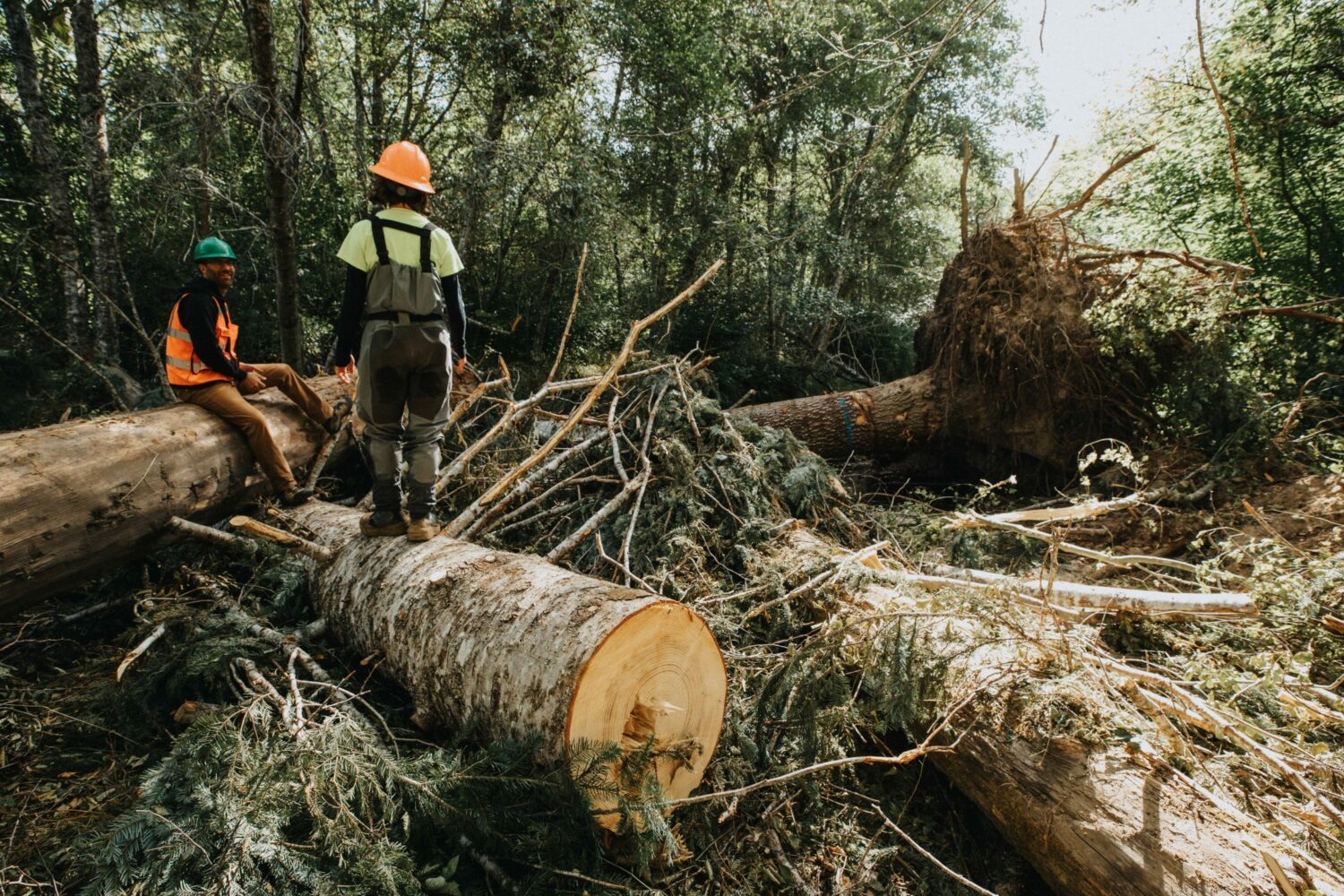
The grant program is already seeded with an initial $10 million commitment from the state and an additional $2.5 million from the timber industry. Even better: Detwiler says these timber commitments will go up to $5 million a year once federal approval is secured, for the 50-year life of the new law. She expects the mitigation committee could be soliciting its first grant applications as soon as this fall.
“In addition to the mitigation funding, there’s also a second pot of money specifically for small forestland owners,” she says.
She’s referring to the Small Forestland Owner Investment in Stream Habitat program, which provides full funding for eligible projects to small forestland owners. The legislature approved $6.7 million over the next two years to support upgrades and other fixes for failing culverts and abandoned roads.
With federal approval, these diverse benefits will be secured for decades. But there’s still that 2027 deadline. Would the timber industry prefer to run down the clock on the HCP process, and win a de facto return to the past? Detwiler doesn’t think so—and points to the timber industry’s own long-running ad campaign as evidence that it still sees the new law as a win.
“There’s a lot of shared incentive in crossing the finish line,” Detwiler says. “The same things that brought private timber and conservation together are still at play now. We’re all sprinting in the same direction.”
“The same things that brought private timber and conservation together are still at play. We’re all sprinting in the same direction.”
WSC Senior Oregon Policy Manager Stacey Detwiler
